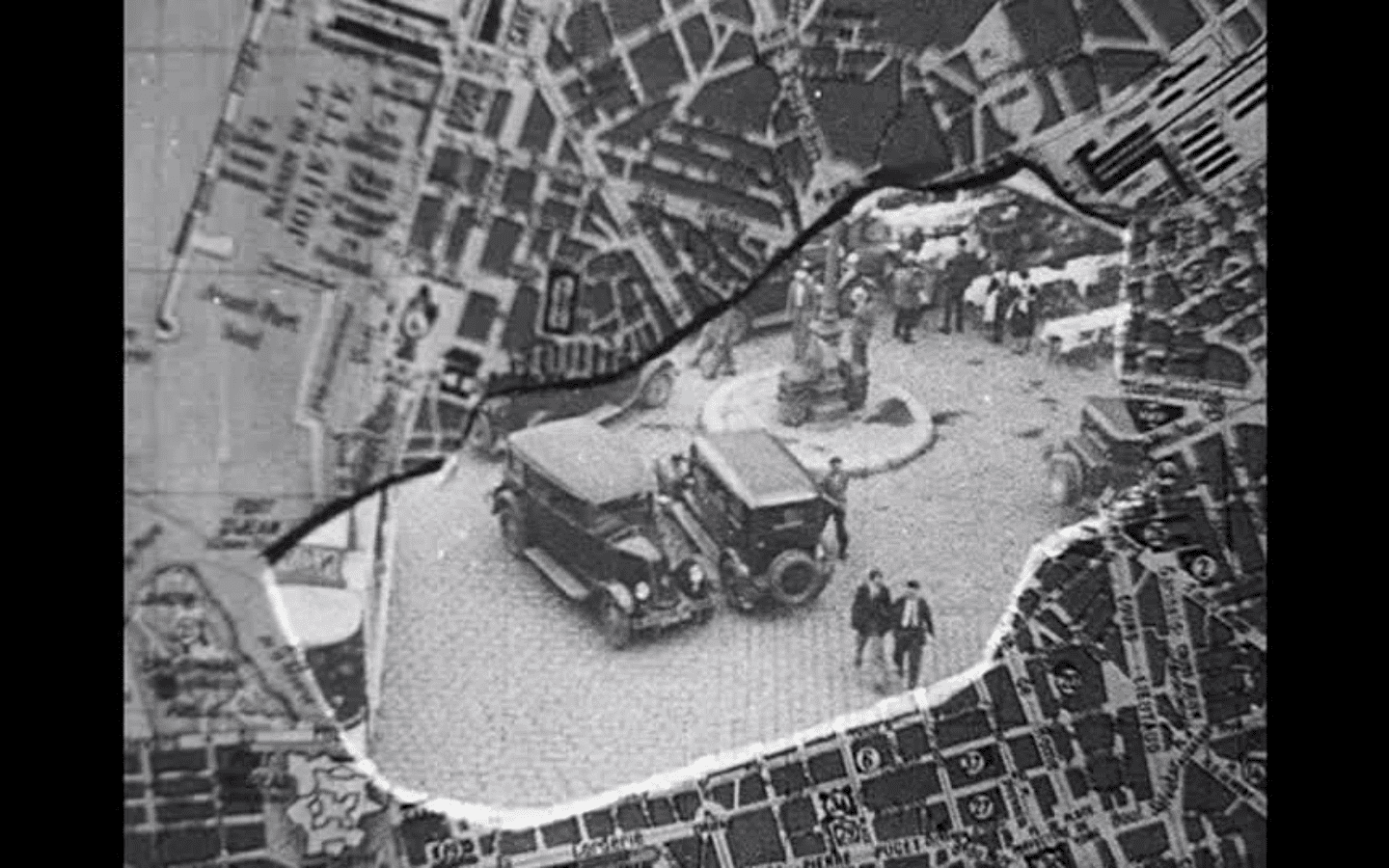
Thinking Cinema Lecture: The Sky of an Image: Modernity’s Cin-Aerial Dimension
University of Iowa Paula Amad
November 13, 2017 · 4:30 pm—6:00 pm · 010 East Pyne
Committee for Film Studies and the Humanities Council's David A. Gardner '69 Magic Project

On Monday, November 13, the Committee for Film Studies will host the third lecture in its seven-part, year-long Thinking Cinema series, which structures vibrant encounters between leading film scholars and the Princeton community. Paula Amad, The University of Iowa, will discuss “The Sky of an Image: Modernity’s Cin-Aerial Dimension.”
Abstract
The fascination and fear aroused by aerial views of the earth seem to be at an all-time high. No longer out of reach, access to and interaction with the history and future of aerial imagery is at the touch of a button, whether sourced from declassified Army archives, Google Earth, or drone-strike footage, and whether serving popular history, environmentalism, or activist art. Still and moving images of the earth from above have come to shape our daily consciousness of what it means to be human, and inhuman, in the 20th and 21st centuries. Indeed, seeing the earth from elevated vantage points has become synonymous, some would argue, with a specifically modern form of vision—that is as much about not seeing as it is about being able to see more than ever before. This talk returns us to the early 20th-century cinematic elaboration of aerial imagery’s ambiguous meanings and focuses upon the relatively ignored realm of aerial cinematography. I will explore the historical and theoretical purchase of my developing concept of cin-aereality, focusing upon a chain of cinematically inflected aerial fixations in the writings of Blaise Cendrars, Fernand Léger, and Jean Epstein. Read in the context of a larger inquiry into early cinema’s aerial vocation, I argue that these writings, in conjunction with early experimentation with non-terrestrial cinematography in avant-garde films such as László Moholy-Nagy’s Marseille, Vieux Port (1929) and Jean Vigo’s A Propos de Nice (1929), offer a vital affirmation and contestation of the current Virilio-esque association of the view-from-above, and cinema in general, with the rationalist logic of militaristic surveillance. A fuller inquiry into the evolution of mobile aerial vision, I contend, forces us to reconfigure the standard reading of the static view from above, introducing radical elements of time and space into our perception of the earth.
Speaker
Paula Amad is an Associate Professor of Film Studies and Chair of the Department of Cinematic Arts at The University of Iowa. She is the author of Counter-Archive: Film, the Everyday and Albert Kahn’s Archives de la Planète and numerous articles in, amongst other journals, Representations, Camera Obscura, History of Photography, Cinema Journal, Film History, and Framework. She is currently writing a book focused on an alternative history of modern aerial vision across photography and film. Amad’s awards include a J. Paul Getty Postdoctoral Research Fellowship (2006–07), an International Grant for Philosophy and Photography Research awarded by The Shpilman Institute for Photography (2011), and the 2014 Katherine Singer Kovács Award for Outstanding Essay from the Society for Cinema and Media Studies for her article in Cinema Journal titled “Visual Riposte: Looking Back at the Return of the Gaze as Postcolonial Theory’s Gift to Film Studies.” Her recent essay published in the Spring 2015 issue of Representations, titled “Film as the ‘Skin of History’: André Bazin and the Specter of the Archive and Death in Nicole Védrès’s Paris 1900 (1947),” presents work related to her third projected book on the topic of the archival imagery in post-war French cinema and post-civil war Lebanese cinema.
Sponsored by the Committee for Film Studies and the Humanities Council’s David A. Gardner ’69 Magic Project.















